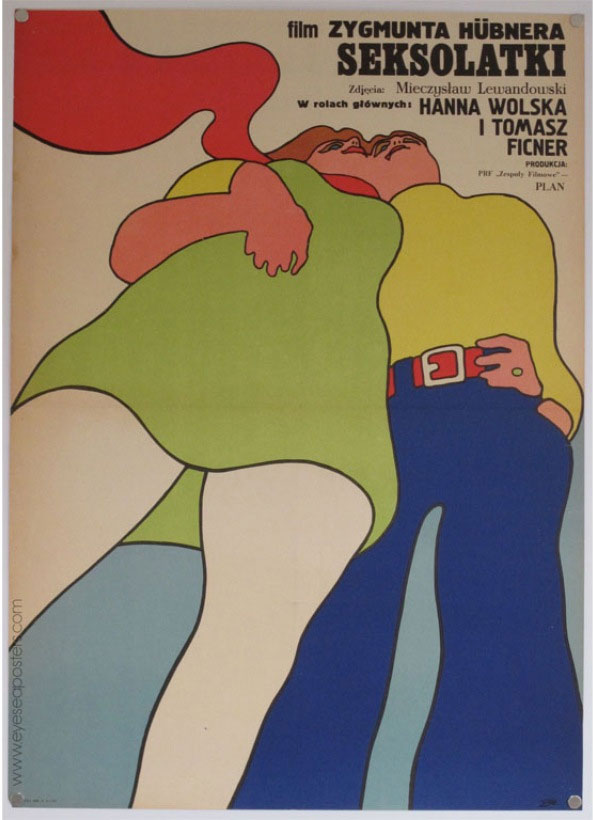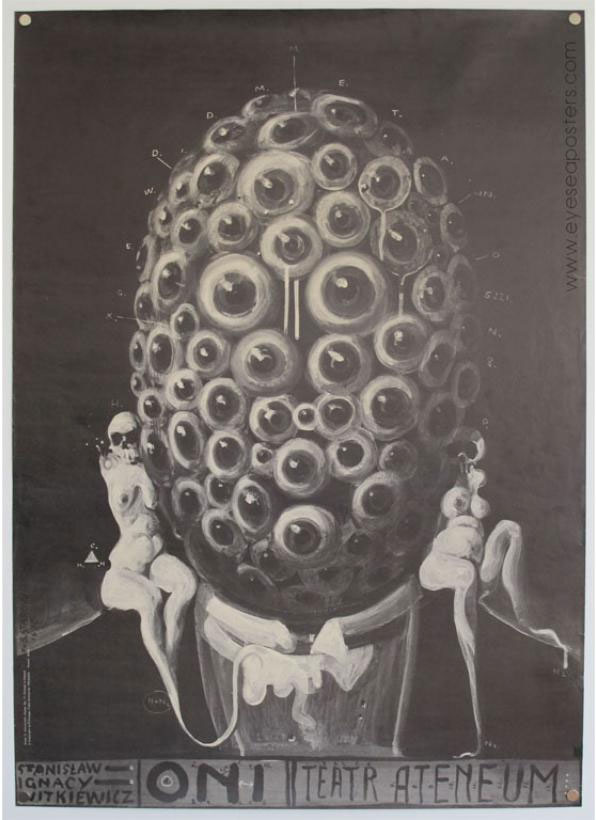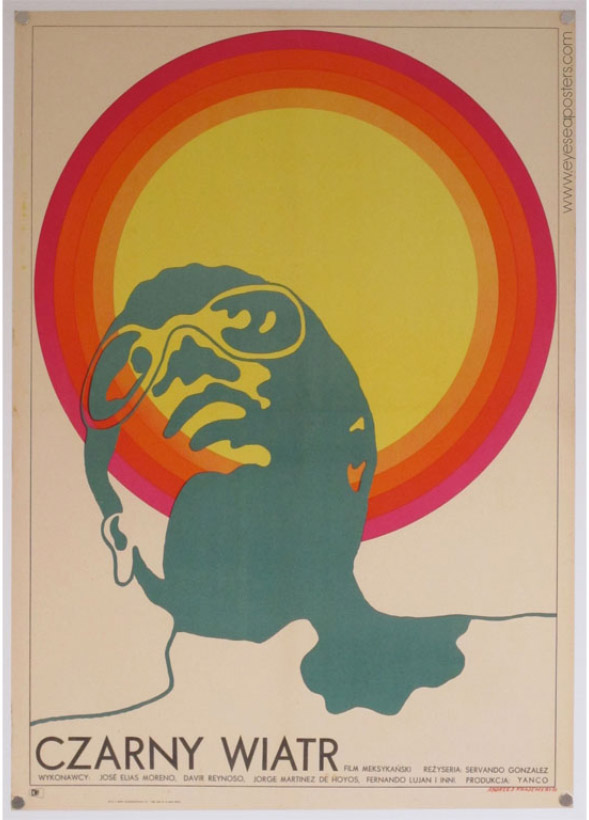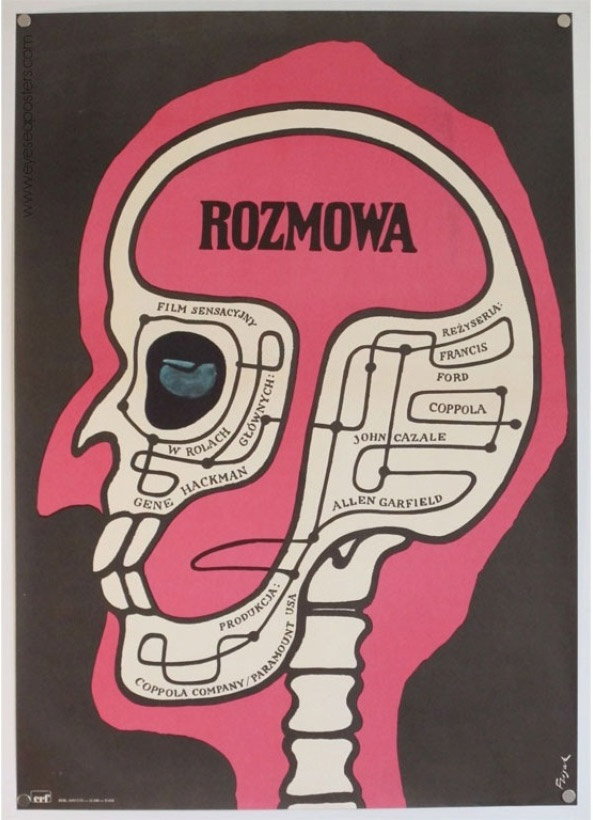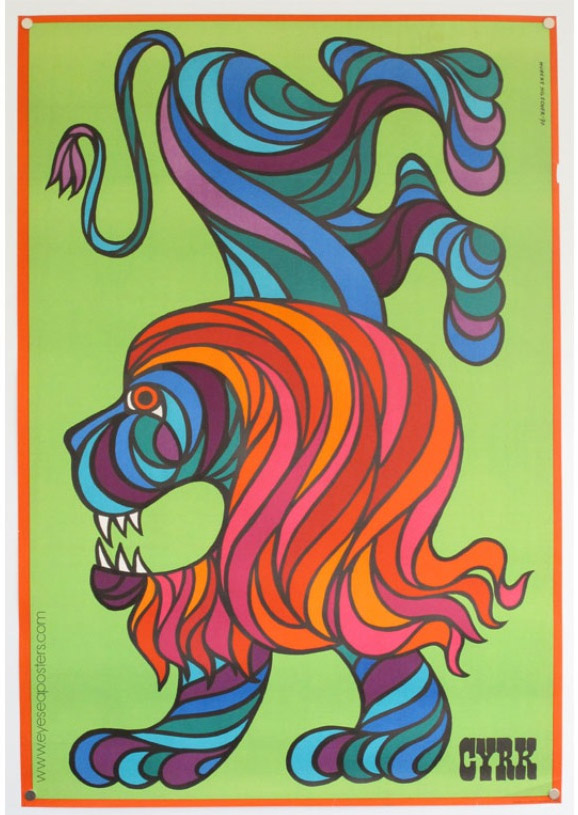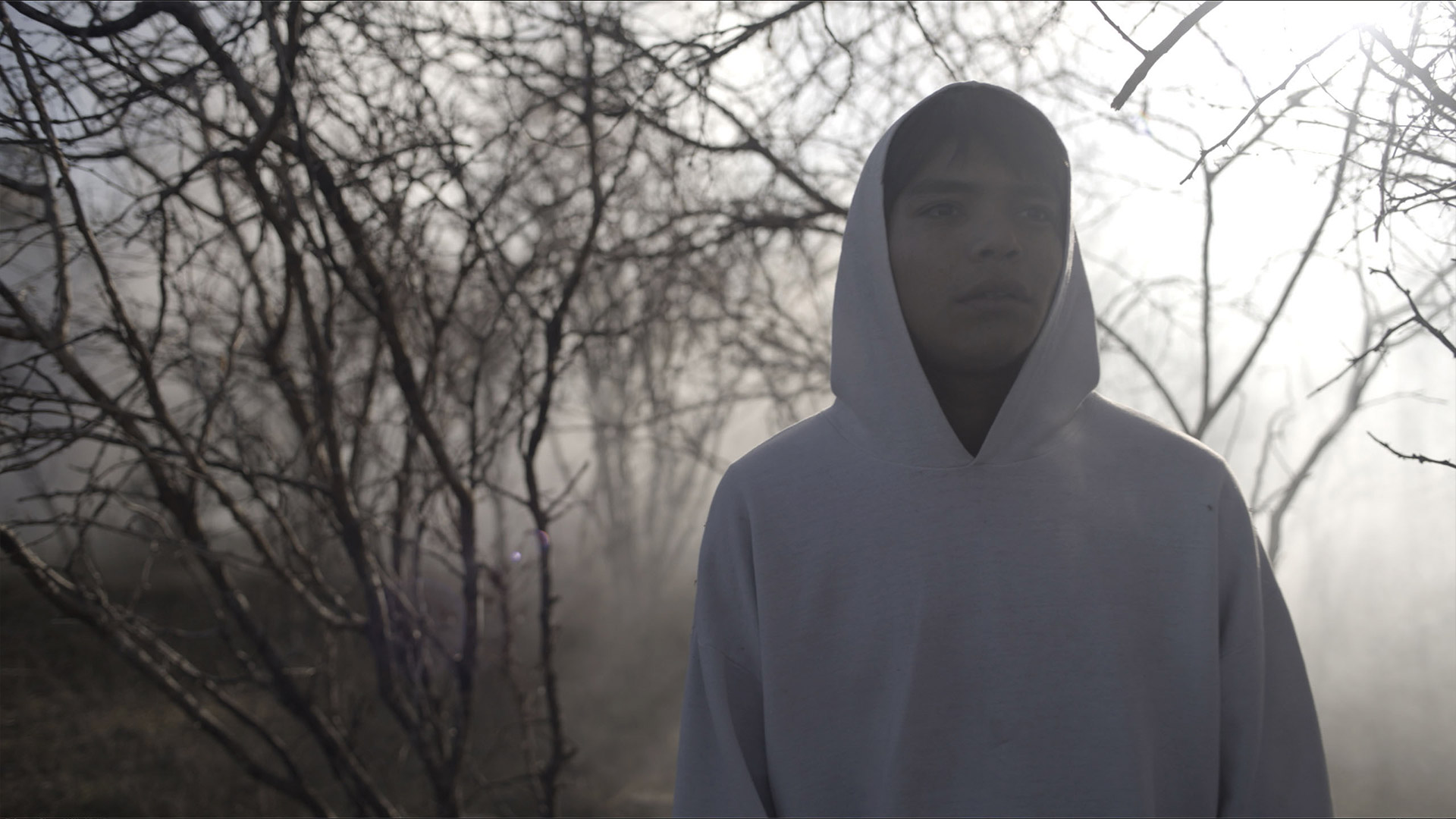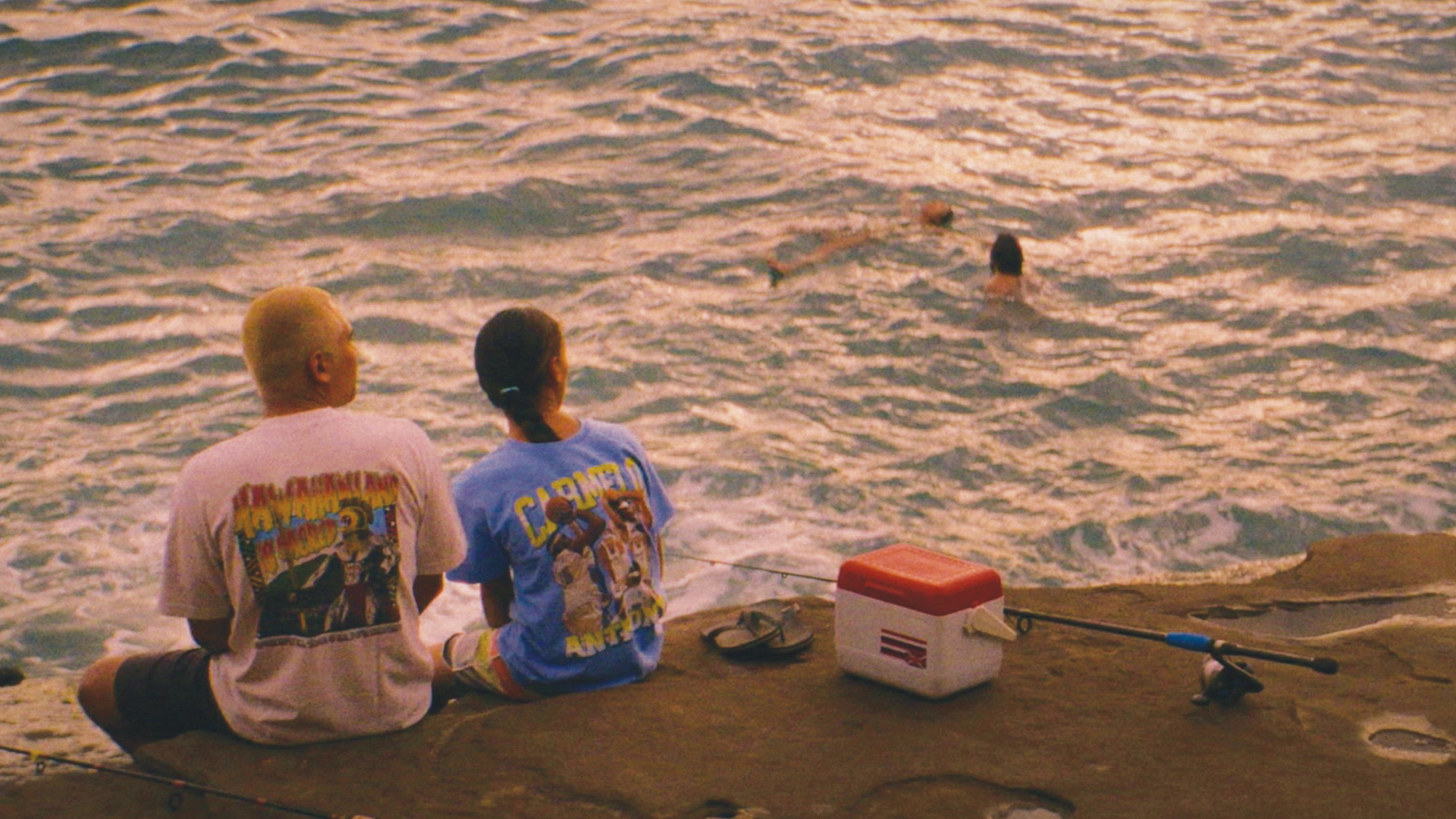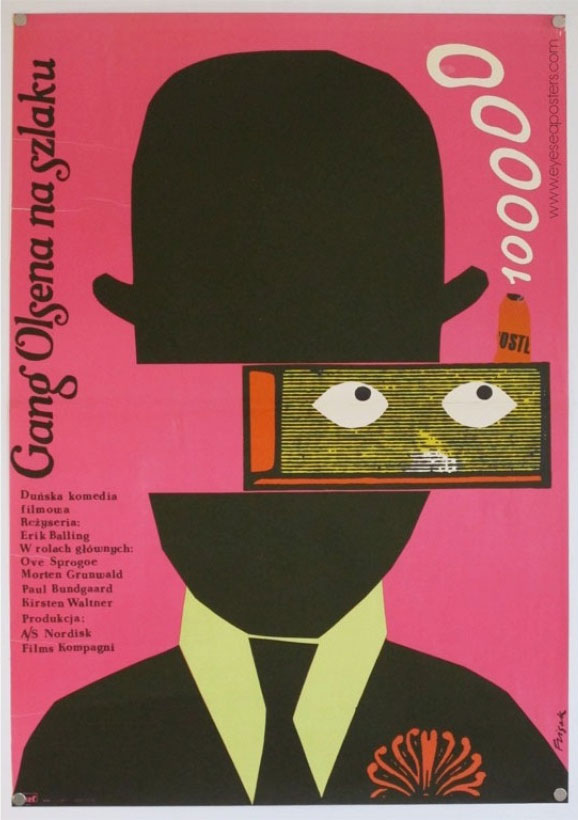
Jerzy Flisak – “Gang Olsena Na Szlaku (The Olsen Gang)” (1976)
In this comparative interview, we speak with two creative studios — Eye Sea Posters, based in the United Kingdom and dedicated to poster archiving and reselling, and The Affiche Studio, which is based in the United States and dedicated to poster restoration — on just what makes Polish posters so compelling.
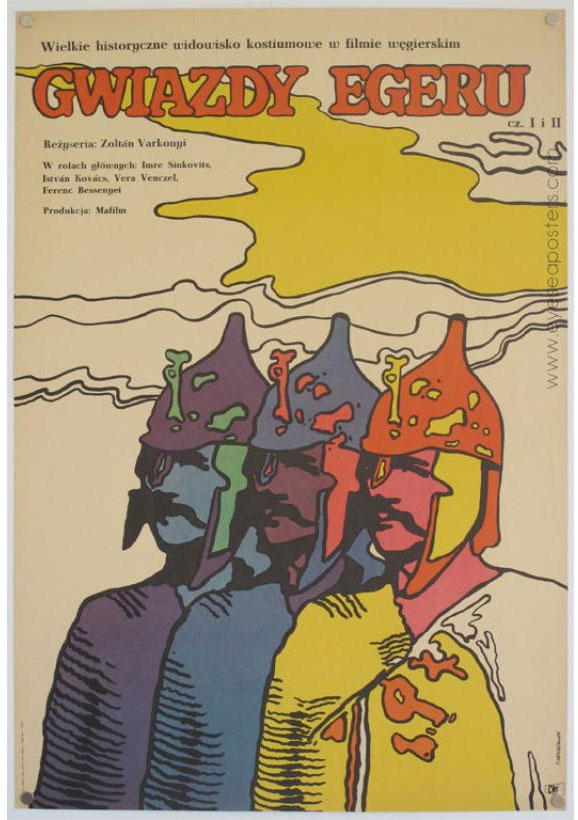
Jacek Neugebauer – “Gwiazdy Egeru” (1969)
James Dyer of Eye Sea Posters
Jason Leonard of The Affiche Studio
What initially drew your company to these posters?
Polish posters produced under Communism are really distinctive because during that time the film industry was controlled by the state and most foreign promotional material was rejected and replacements were commissioned.
Established Polish artists were asked to convey the essence of the film in their poster designs and unlike their Western counterparts, the use of film stills or photos of the film’s stars wasn’t necessary, and this lead to some amazing and often abstract art being pasted on the streets of Poland.
I’ve been collecting these posters for a while now, and started selling a few here and there to help fund the collection. Eye Sea grew out of that, and I started the website in 2011.
When I first started doing poster restoration, the Polish images that were coming in always stood out to me. Over time, I started collecting them on my own. I’m really drawn to the surrealist imagery, design, and historical significance of the Polish poster.
Can you recall a specific or initial moment when viewing these works made a memorable impact on you?
Around 10 years ago, someone sent me a postcard with a Polish poster on it. It was the “Seksolatki” poster by Maciej Zbikowski; I was instantly hooked and I’ve been a fan ever since.
I remember unrolling a package from a client which had a bunch of newer posters by the artist Wieslaw Walkuski, and I was immediately drawn in.
How do you locate the posters for sale?
They come from various sources: old cinemas, flea markets, auctions etc. We hunt high and low for them. I’ve got a good friend in Poland who helps me out, and without him it would be very difficult.
I’ve collected through various avenues, sometimes finding things online and sometimes through clients.
Given that some of your posters are no doubt gone once you sell them, how does that change the way you value or appreciate them?
As they become increasingly hard to find, it becomes harder to put a price on them and harder to part with them. It can take a long time to find a poster so sometimes I’m reluctant to sell one because I might not find another one. There’s a few I regret selling but I have to remind myself I don’t have much wallspace and there’s no point in them sitting in a box gathering dust where nobody can see them.
I’ve been collecting for years now, occasionally selling things here and there. It’s interesting, because when I search for things to collect, I’m generally buying things I really admire. So sometimes selling is rough when I get attached to a certain poster. Sometimes I’ll look for multiple copies of things I really love so I can keep one!
James Dyer (Eye Sea Posters):
As well as the artwork it’s the quality of the printing, the paper stock and the natural aging process that makes these posters great and that’s not something easily reproduced. Poster restorers do an important job because they help to preserve a piece of history.
Jason Leonard (The Affiche Studio):
Linen-backing is an archival mounting of a poster. After the mounting, we go in and do restoration, which could be patching in missing sections and color restoration. Depending on the work needed, it takes usually a couple weeks in the studio, as we work on many pieces at the same time. The process is an old one, but was transformed a bit in the ’70s. There are many steps along the way that have to be performed with a detailed artistic eye. It’s a very hands-on procedure, preserving the original poster.
How does one go about identifying a particular work or artist? How easy or difficult is this process, and what resources do you use?
There’s various ways to identify a poster. The serial number and logos on it. The artist’s signature is usually printed on it. I also use various books, catalogues and the internet, and if all else fails, I phone a friend in Poland.
We have a couple clients with great websites, www.theartofposter.com and www.contemporaryposters.com


